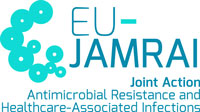Step by step guide for the implementation and assessment of Job Shadowing
Job Shadowing is an experiential workplace learning method where an individual (the “shadowee”) closely follows and observes an experienced professional (the “host”) performing their regular duties in their actual work environment over a defined period. The primary aim is for the shadowee to gain realistic insights into the host’s roles, responsibilities, decision-making processes, skills, and the practical application of knowledge, particularly in complex or nuanced areas such as those related to AMR/AMS. It involves focused observation and contextual inquiry to bridge theory and practice, helping the shadowee to understand “what people actually do in the course of their everyday lives, not what their roles dictate of them” (Quinlan, 2008, p. 1480, as cited in Kevdzija, 2022, and Kevdzija, 2024). It allows the student to see how knowledge and skills are applied in real-life situations (Reese, 2005, as cited in Makovec, 2021).

Planning a Job Shadowing
The following steps should be taken into consideration when planning a Job Shadowing experience on AMR/AMS:
- Preparation and Objective Setting: The shadowee, ideally with support from a program facilitator, defines clear personal learning objectives for the shadowing experience, focusing on specific aspects of the host’s role in AMR/AMS (e.g., observing AMS ward rounds, understanding biosecurity measure implementation on a farm, witnessing communication about appropriate antibiotic use). Thorough preparation includes researching the host’s role and the specific AMR/AMS context. (Makovec, 2021; Tyldesley-Marshall et al., 2020).
- Host Identification and Briefing: Identify and engage a host professional who demonstrates exemplary or insightful AMR/AMS practices and is willing to be shadowed and articulate their processes. Both host and shadowee must be briefed on the purpose, duration (which can range from a single day to several (Kevdzija, 2022), expectations, ethical considerations (confidentiality, informed consent if patients/clients are involved), and the shadowee’s primarily observational role. (Tyldesley-Marshall et al., 2020).
- Structured Observation: The shadowee “acts like a shadow,” closely following the host and attentively observing their work tasks, interactions (e.g., with patients, other staff, farmers), decision-making processes, problem-solving approaches, and use of tools or resources pertinent to AMR/AMS. The shadowee generally does not actively participate in tasks unless explicitly invited by the host for minor, non-critical activities. (Makovec, 2021; Tyldesley-Marshall et al., 2020).
- Discreet Note-Taking: The shadowee should discreetly take field notes focusing on key observations, specific AMR/AMS practices seen, questions that arise, critical incidents, and initial reflections on the host’s actions and their rationale. (Tyldesley-Marshall et al., 2020).
- Contextual Inquiry and Clarification: At appropriate times (e.g., during lulls in activity, or pre-scheduled brief discussion slots, not interrupting critical workflows), the shadowee can ask the host pertinent questions to clarify observations, understand the reasoning behind specific AMR/AMS decisions, or explore challenges faced. (Makovec, 2021; Tyldesley-Marshall et al., 2020).
- Guided Reflection and Debriefing: This is a critical phase. The shadowee should engage in structured reflection on their observations, linking them to theoretical knowledge, their own professional experiences, and their initial learning objectives. Facilitated debriefing sessions with the host, a facilitator, or a peer group after the shadowing period are crucial for consolidating learning, discussing insights, and planning for application of new understanding. (Makovec, 2021, and Kevdzija, 2024, emphasizes combining observation with debriefing).

Defining roles in a Job Shadowing
Facilitator’s role (Program Coordinator): Design and oversee the Job Shadowing program, recruit and prepare both hosts and shadowees, establish clear learning objectives and ethical protocols, provide shadowees with observation frameworks or guiding questions relevant to AMR/AMS, facilitate reflective debriefing sessions, and ensure a high-quality learning experience. (Adapted from general principles described in Makovec, 2021).
Host Professional’s Role: Be willing to open their practice to observation, articulate their thought processes and decision-making related to AMR/AMS when feasible, create opportunities for brief Q&A, and provide a realistic and candid view of their role and its challenges.
Participant’s role: Actively prepare for the experience by setting clear goals, maintain professionalism and respect for the host’s work environment, observe attentively and critically (focusing on AMR/AMS aspects), take useful notes discreetly, ask thoughtful questions at appropriate junctures, engage deeply in personal and facilitated reflection, and actively work to translate observations into actionable insights for their own practice. (Adapted from general principles described in Makovec, 2021)

Assessing a Job Shadowing
Methods
- Submission of detailed reflective reports, learning journals, or portfolios by the shadowee, documenting observations, critical analysis of AMR/AMS practices seen, and connections to personal learning goals. (Makovec, 2021).
- Development of a specific action plan by the shadowee detailing how they intend to apply or adapt observed AMR/AMS best practices or insights into their own professional setting.
- Oral presentations or group discussions where shadowees share key learnings, challenges observed, and innovative AMR/AMS solutions with peers and/or supervisors.
- Feedback from the host professional regarding the shadowee’s engagement, professionalism, and quality of questions (if appropriate).
Tools
Structured reflection templates or guiding questions, observation checklists (tailored to specific AMR/AMS focus areas like prescribing processes, biosecurity measures, or IPC techniques), action planning worksheets, peer-assessment of presentations, facilitator-led group debriefing summaries.

Suggested Job Shadowing prototype
Target Audience: Food Producers, Wastewater Managers, Prescribers, Dispensers.
Learning Objectives:
- Gain a comprehensive understanding of the daily roles and responsibilities of an AMS lead pharmacist in a hospital setting.
- Observe practical application of AMS principles in real-world clinical scenarios (e.g., prospective audit and feedback, guideline development discussions, IV-to-oral switch promotion).
- Identify effective communication strategies used by the AMS lead when interacting with prescribers and other healthcare professionals on stewardship matters.
- Reflect on how observed AMS activities can inform and improve their own future practice as dispensers or clinical support staff.
Curriculum/Activities:
- Preparation: Shadowee reviews hospital AMS guidelines, common AMR issues, and defines 2-3 specific learning questions (Makovec, 2021; Tyldesley-Marshall et al., 2020).
- Shadowing (e.g., 1-2 days):
- Observe the AMS pharmacist during ward rounds, participation in multidisciplinary team meetings focused on infections.
- Witness discussions related to antimicrobial selection, dosing, de-escalation, and duration.
- Observe data collection for AMS audits and interventions.
- Note communication techniques, challenges faced, and solutions sought.
- Debriefing: Daily short debrief with the host pharmacist to clarify observations and ask questions (Makovec, 2021; Tyldesley-Marshall et al., 2020)
- Reflection: Shadowee completes a structured reflective journal on observed practices, challenges, and personal learning related to AMS (Makovec, 2021.
Evaluation of the Prototype’s Effectiveness:
- Quality of the shadowee’s reflective journal and their ability to connect observations to AMS principles.
- Development of a specific action point list by the shadowee for their own practice.
- Feedback from both shadowee and host pharmacist on the value and organization of the shadowing experience.
- (Longer-term) Self-reported changes in the shadowee’s confidence or approach to AMS-related tasks in their regular role.
References
- Danijela, M. (2021). Learning Potentials of Job Shadowing in Teacher Education. International Journal of Learning, Teaching and Educational Research, 20(12), 255–266. https://doi.org/10.26803/ijlter.20.12.15
- Kevdzija, M. (2022). Using shadowing for architectural research in healthcare environments: opportunities and challenges. The Evolving Scholar, 10. https://doi.org/10.24404/6230d0f95e57b895ac67098f
- Kevdzija, M. (2024). Shadowing stroke patients to explore the rehabilitation built environment: approach, insights, and lessons learned. Qualitative Health Research, 35(7), 699-713. https://doi.org/10.1177/10497323241236305
- Korançe, F. (2021). The Growing Relation between Environment and Public Health. SciMedicine Journal, 3(2), 100-115. https://doi.org/10.28991/scimedj-2021-0302-3
- Lucchini, R. G., McDiarmid, M., van der Laan, G., Rosen, M., Placidi, D., Radon, K., Ruchirawat, M., Kurtz, L., & Landrigan, P. (2018). Education and Training: Key Factors in Global Occupational and Environmental Health. Annals of Global Health, 84(3), 436-441. https://doi.org/10.29024/aogh.2328
- Nanka, O., Lysychenko, M., Kiriyenko, M., Pavlykivskyi, V., Duyunova, T., & Senchuk, I. (2019). Relationship study between the student learning approach in the occupational safety and health field and acquired competencies. Journal of Achievements in Materials and Manufacturing Engineering, 95(1), 32–41. https://doi.org/10.5604/01.3001.0013.7623
- Parker, G., Berta, W., Shea, C., & Miller, F. (2019). Environmental competencies for healthcare educators and trainees: A scoping review. Health Education Journal, 79(3), 327–345. https://doi.org/10.1177/0017896919886599
- Tyldesley-Marshall, N., Greenfield, S., Neilson, S. J., Adamski, J., Beardsmore, S., English, M., & Peet, A. (2020). Exploring the Role of ‘Shadowing’ as a Beneficial Preparatory Step for Sensitive Qualitative Research with Children and Young People with Serious Health Conditions. Societies, 10(1), 14. https://doi.org/10.3390/soc10010014
